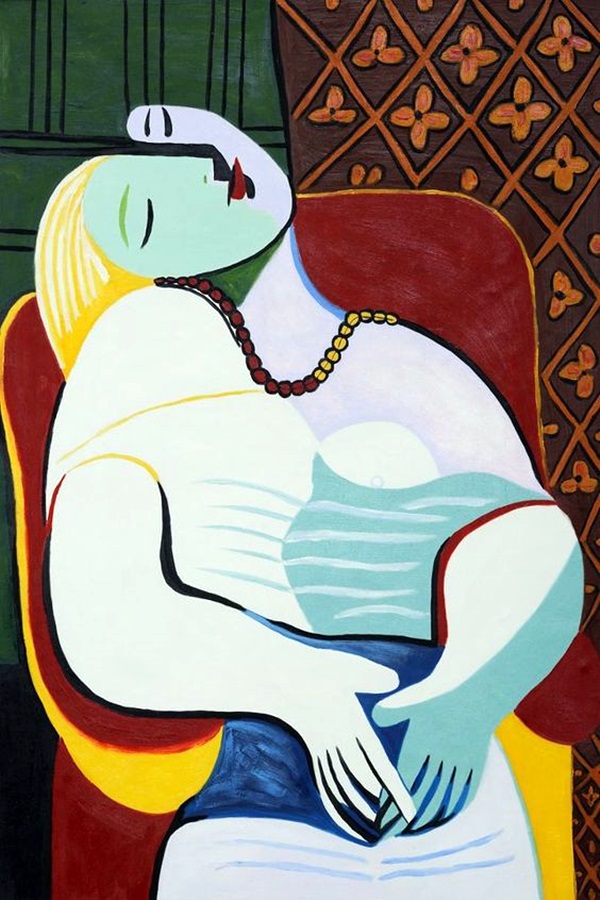

Juan Gris, Houses in Paris, Place Ravignan (1911). Often, these center on references to table games, like dice or chess, as well as musical instruments, suggesting both the hothouse art studio atmosphere that was the context of their work, and what the two painters were doing: playing around, jamming together.

This discovery inspired an exchange of exploded still-lifes, the kind of intimate yet adventurous paintings that we think of as quintessentially Cubist. Ultimately, they out-Cézanned Cézanne, carrying the Post-Impressionist master’s laborious analysis of form to the point where form broke apart all-together. In smallish landscapes like Picasso’s The Oil Mill (1909) and Braque’s The Castle of La Roche-Guyon (1909), they come across very much as what they were, lusty young art nerds competing to out-Cézanne one another. Thus, in the opening galleries, you have a cascade of classic early-period Cubism by Picasso and Braque. Photo: © 2014 Estate of Pablo Picasso / Artists Rights Society (ARS), New York Instead, Lauder’s collection focuses on the biggest names, the “Four Horsemen” of the Cubist apocalypse. It was used then to refer to artists like Jean Metzinger and Henri Le Falconnier, as well as Marcel Duchamp and his brother, the sculptor Raymond Duchamp-Villon, the so-called “Salon Cubists.” This context goes missing from the Met’s “Cubism” blockbuster. In the show’s catalogue, Jack Flam reminds us that the term “cubism” actually came into currency in 1910 to describe a group that specifically did not include the movement’s pioneers, Pablo Picasso and Georges Braque.

(As the heir of Estée Lauder, Leonard is, incidentally, a perfect representative of Thomas Piketty’s theory that we are returning to “patrimonial capitalism.”) Lauder’s obsessive Cubist collection, a trove he pledged to the Met last year as a promised gift. The show, sweeping through six packed, mausoleal galleries, presents some of the best examples of Cubist art that money can buy-and I mean that phrase very literally, since it is in essence a curated inventory of cosmetics mogul Leonard A. Now that this is out of the way, we can move on and ask if there is actually anything left to say about Cubism. First things first: The Metropolitan Museum’s current “Cubism” show is very good.


 0 kommentar(er)
0 kommentar(er)
